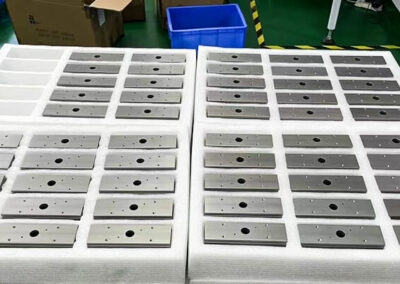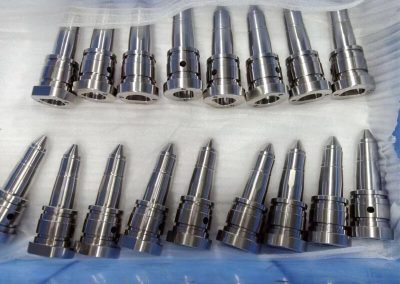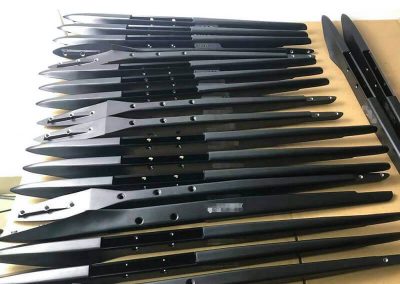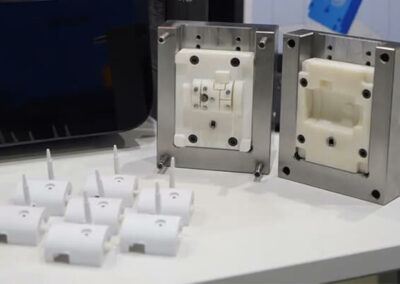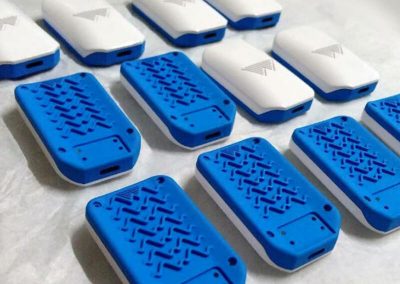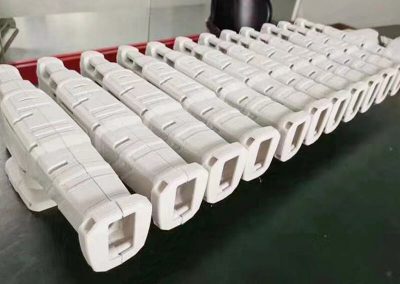Low Volume Manufacturing Overview
The focus of modern manufacturing theory, tools, and best practices is on how to produce thousands or millions of identical parts or products at a lower unit cost. Customization and small-batch production require a completely different approach, and many manufacturers face unique challenges when trying to adapt large-scale production systems to accommodate these situations.
However, due to the rapid development of manufacturing methods and materials, there are now multiple technologies available to quickly and cost-effectively produce these customized and small-batch end parts and products.
We have mastered these low volume manufacturing processes, possessing extensive production experience and industry knowledge. We welcome you to engage in a conversation with us.
What is Low Volume Manufacturing?
Low volume manufacturing refers to the production of a moderate quantity of parts, typically ranging from 50 to 100,000 units. It serves as a middle ground between prototype development and full-scale production. Today, we will highlight the unique advantages offered by this service.
Benefits of Low Volume Manufacturing
There are top four advantages of low volume manufacturing. You can know more about them, determine if you want to consider this process.
Cost Savings of Low Volume Manufacturing
The common belief is that manufacturing costs per unit decrease as production volumes increase. While this holds true for mass production scenarios, such as pressure die casting or injection molding, it requires a substantial investment in expensive tool steel. This steel needs to be hardened and heat-treated meticulously to withstand the demands of large-scale production.
In contrast, low volume manufacturing, catering to quantities up to 100,000 pieces, allows you to avoid significant upfront investments while still obtaining high-quality parts. If the tool steel does not require extensive durability, it becomes more cost-effective to purchase and quicker to heat treat and machine. Additionally, if your tool wears out during production and a replacement is needed, we provide that service at no extra charge.
Conversely, when a factory is configured for large-scale production, it carries a substantial inventory of raw materials and equipment. To recoup their investment, they often impose a high minimum order quantity. However, specialists in low volume manufacturing do not carry the same level of overhead, enabling us to process orders faster and more economically, without demanding any minimum order.
Faster Time to Market
As technological advancements continue to accelerate, there is constant pressure on product developers to innovate and bring new designs or modified versions to market swiftly. Being the first to market can make a significant difference in determining success or failure. Low volume manufacturing provides an ideal solution by allowing you to produce a sufficient volume for marketability without burdening yourself with excessive inventory.
Furthermore, optimized supply chains for low volumes ensure short lead times, with parts ready for use within days or weeks, rather than months. This expedites your route to market, giving you a competitive edge.
Design Flexibility of Low Volume Manufacturing
During the production process, you may identify aspects of the design that require modification. Low volume manufacturing offers the flexibility to make these changes without significantly impacting the overall order. This agility allows for iterative improvements and adjustments as needed.
Bridge Production Option from Low Volume Manufacturing
Another advantage of low volume manufacturing is its capability to serve as a bridge towards eventual full-scale production. Often referred to as bridge production or bridge tooling, this approach enables you to gradually scale up volumes while refining best practices. As volumes increase progressively, you can achieve additional cost savings and enhance product quality through continuous process improvement.
How to Get Started on Your Low Volume Manufacturing Project
Getting started on your low volume manufacturing project involves a series of steps to ensure a smooth and successful production process. Here’s a guide to help you begin.
Define Your Project Requirements
Clearly outline your project requirements to us, including the quantity of parts needed, desired quality standards, specifications, and any specific manufacturing processes or materials required. Consider factors such as budget, timeline, and any design modifications you anticipate.
Provide Detailed Design Documentation
Prepare detailed design documentation of your products, including 3D CAD models, technical drawings, and specifications. Ensure that your documentation is clear, comprehensive, and accurately represents your design intent. This information will serve as the basis for manufacturing your parts.
Material Selection
Discuss material options with us, considering factors such as functionality, durability, cost, and availability. We can provide guidance on selecting the most suitable materials for your project, considering both performance requirements and production feasibility.
Prototype Development
In many cases, we suggest to create prototypes before moving into full production. Prototyping allows you to validate the design, test functionality, and make any necessary adjustments. Collaborate with us and share your ideas to determine the most appropriate prototyping method, such as 3D printing or CNC machining.
Production Planning
Once the design and prototyping phase is complete, we need to make a production plan. This includes determining the production timeline, establishing quality control measures, and addressing any specific requirements or constraints. Ensure that all results are aligned with expectations and deliverables.
Communication and Project Management
We need to maintain open and regular communication together to stay updated on the progress of your project. Address any questions or concerns promptly or optimize the design flow to ensure a smooth workflow. Effective project management, including tracking milestones, monitoring production, and addressing any issues that arise, is crucial for successful project execution.
Shipping and Delivery
Once manufacturing is complete, coordinate with us to arrange shipping and delivery of the finished parts. We need to ensure that appropriate packaging and logistics are in place to protect the parts during transit.
By following these steps and maintaining effective collaboration with us, you can kickstart your low-volume manufacturing project and move towards bringing your product to market efficiently.
Sungplastic: Best Choice of Low Volume Manufacturing
Sungplastic specializes in low volume production with over 20-year experience in this industry. In our company development process, there are many successful cases of delivering high-quality products, and a range of manufacturing capabilities that align with your project requirements. Our communication and customer service has always satisfied our customers. We are good at optimize your design for manufacturability (DFM). Our expertise can help identify potential design improvements, cost-saving opportunities. We will handle the production processes, such as tooling, machining, casting, or molding, depending on your project requirements. Throughout the manufacturing process, rigorous quality control measures should be implemented to maintain product quality and consistency.
You can request quotes and discuss ideas with us, we are committed to provide a competitive pricing and high quality.
Get a free quote and design analysis today.
We’ll reply to you within 6 working hours.
We respect your privacy.
+86 139 2927 4777 (WhatsApp, Wechat)

